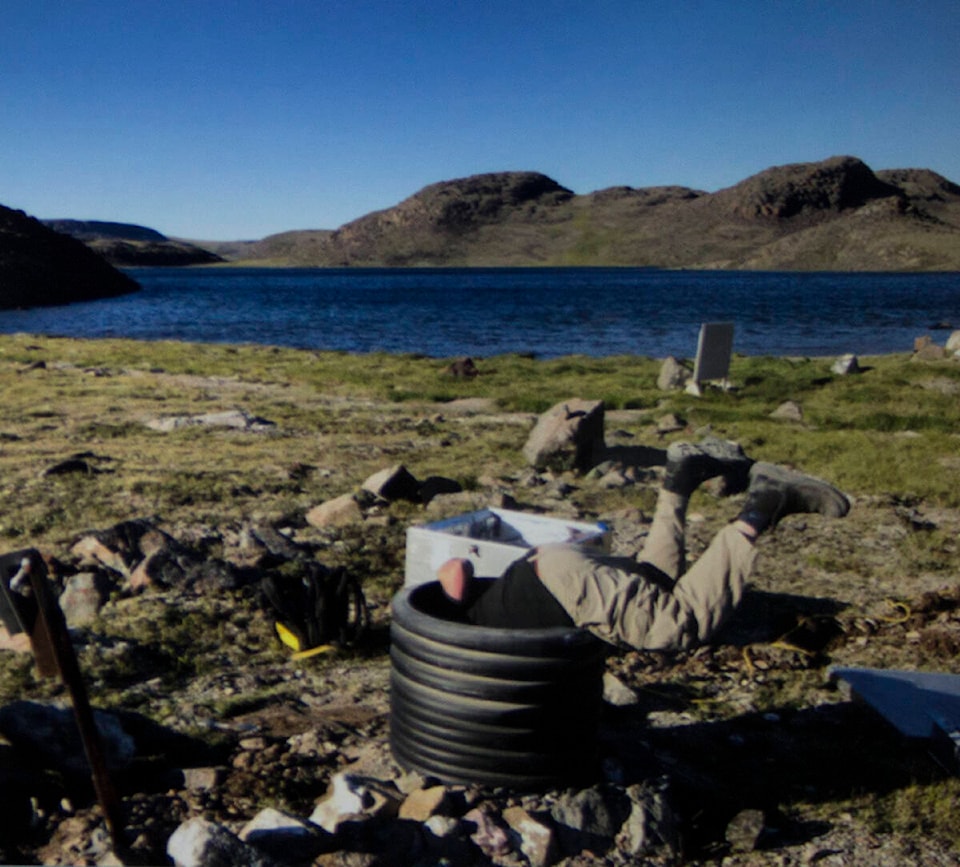Earthquakes may not be the first thing you think of when you think of the Arctic.
But as it turns out, the Beaufort and Mackenzie Deltas are among the more tectonically active parts of Canada.
“Not that many occur near the populated areas here, but there are actually quite a bit of earthquakes that happen here,” said Andrew Schaeffer, of the Geological Survey of Canada, who spoke during the Aurora Research Institute’s speaker series July 28. “An earthquake is the brittle response of the Earth’s crust and the accumulation of stress that exceeds the strength of the rock. A good example is to take a pencil and slowly bend it. It’s going to bend for a bit and then it’s going to suddenly break.”
Schaeffer said there are a lot of earthquakes in the area, but northern realities make it hard to say exactly how many. Cold weather can disrupt seismic equipment and large animals like bears and wolves have a tendency to break instruments when they find them. All of this is complicated by the remote locations of many reading sites in the north where they’re only checked once a year, instead of in real time like in most of the rest of the country.
However, the data scientists are able to gather has helped them understand what’s happening beneath the surface. They can tell that the rocks once pressed down by glaciers are now slowly moving back up, creating tension with surrounding rocks, leading to some of the tremors in the delta.
But that’s not all. Transformation boundaries are putting more pressure on the region’s rock. These are the edges of two plates that slide next to one another, beginning off the coast of Alaska and extending well into the Canadian continental shelf. The Richardson fault continues all the way into the Mackenzie mountains.
Another source of the shakes comes from the Beaufort Sea where scientists believe a subduction zone — one plate sinking beneath another — is at work digesting old crust. All this energy travels further in the north because frozen rock and soil carry energy more efficiently than thawed counterparts. This area is of particular concern because a big earthquake below the surface could cause a tsunami, which could wreak havoc on the already eroding coastline.
“One theory for this is it might be a brand new subduction zone forming,” he said. “We need to put offshore instruments to fully address that, but by having instruments on the coast we can start to improve our understanding of that concept.”
In spite of all the seismic activity in the region, Schaeffer said the shakes people experience in their homes here in Inuvik are likely not from earthquakes, but from big trucks and machinery moving over frozen soil, transferring energy to buildings on stilts.
The interference from human activity makes taking seismic measurements around town next to impossible, which is why most stations are in remote areas.
Scientists are still trying to determine if melting permafrost is affecting seismic activity. Schaeffer said evidence suggests that’s not the case in the eastern Canadian Arctic but the jury’s still out when it comes to the west.
“There are zero-order questions remaining to be answered on our basic understanding of tectonics in the southwest Canadian Arctic,” he said. “Why do earthquakes occur on the Richardson fault but they don’t go all the way to the coastline? Usually faults don’t just stop.”
